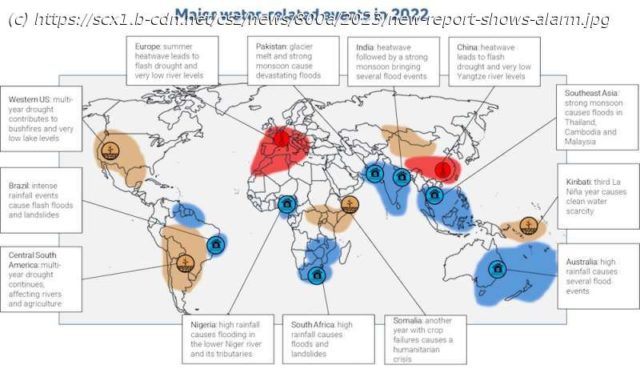In 2022, a third La Niña year brought much rain to Australia and Southeast Asia and dry conditions to the other side of the Pacific. These patterns were expected, but behind these variations there are troubling signs the entire global water cycle is changing.
In 2022, a third La Niña year brought much rain to Australia and Southeast Asia and dry conditions to the other side of the Pacific. These patterns were expected, but behind these variations there are troubling signs the entire global water cycle is changing.
Our research team watches the global water cycle closely. We analyze observations from more than 40 satellites that continuously monitor the atmosphere and Earth’s surface. We merge those with data from thousands of weather and water monitoring stations on the ground.
For the first time, we’ve drawn on those many terabytes of data to paint a full picture of the water cycle over a year for the entire globe, as well as for individual countries. The findings are contained in a report released today.
The key conclusion? Earth’s water cycle is clearly changing. Globally, the air is getting hotter and drier, which means droughts and risky fire conditions are developing faster and more frequently.
In 2022, a third consecutive La Niña influenced weather around the world. Three La Niña years in a row is unusual but not unprecedented.
A La Niña is an oceanic event in which sea surface temperatures are cooler than normal in the central and eastern tropical Pacific and warmer than normal in the western Pacific. The phenomenon strengthens easterly trade winds that bring rain to southeast Asia and Australia.
In 2022, La Niña combined with warm waters in the northern Indian Ocean to bring widespread flooding in a band stretching from Iran to New Zealand, and almost everywhere in between.
The most devastating floods occurred in Pakistan, where about 8 million people were driven out of their homes by massive flooding along the Indus River. Australia also experienced several severe flood events throughout the year—mostly in the east, but also in Western Australia’s Kimberly region at the very end of the year and into 2023.






